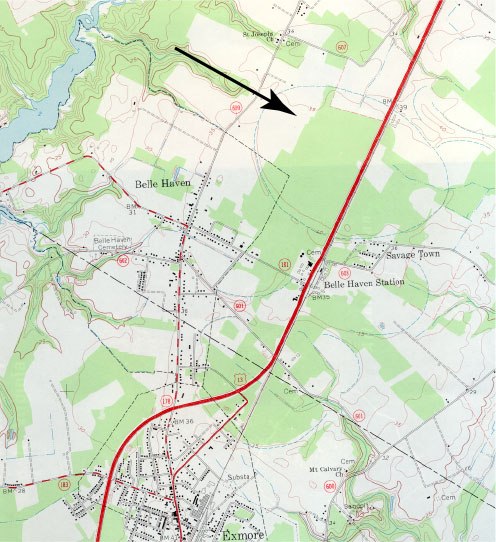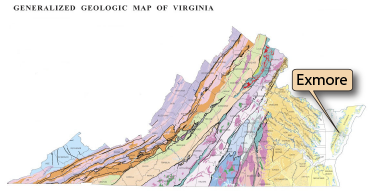
Special Physiographic Features, Part 3
Carolina Bays
• Carolina Bays are mysterious features common along the Atlantic Coastal Plain. There are approximately 500,000 known between northern Florida and southern New Jersey.
• Bays are shallow, oval-shaped depressions with the long axis oriented S 50 E, and having a raised rim of sand on the east and southeast side.

 Topographic map (above) shows Carolina Bays in Virginia’s Eastern Shore near Exmore. The arrow indicates a large bay, but many others are present on the map. Strong Pleistocene winds blowing toward the southeast may have helped create these.
Topographic map (above) shows Carolina Bays in Virginia’s Eastern Shore near Exmore. The arrow indicates a large bay, but many others are present on the map. Strong Pleistocene winds blowing toward the southeast may have helped create these.
• Age of the bays is thought to be approximately 100,000 to 200,000 years old.
• Many theories of origin have been proposed, including:
• meteorite swarm impact
• ancient bays or lagoons
• Pleistocene fish beds.
• The latest idea suggests that the bays may have been formed by strong winds blowing in one direction across water ponded in shallow surface depressions.